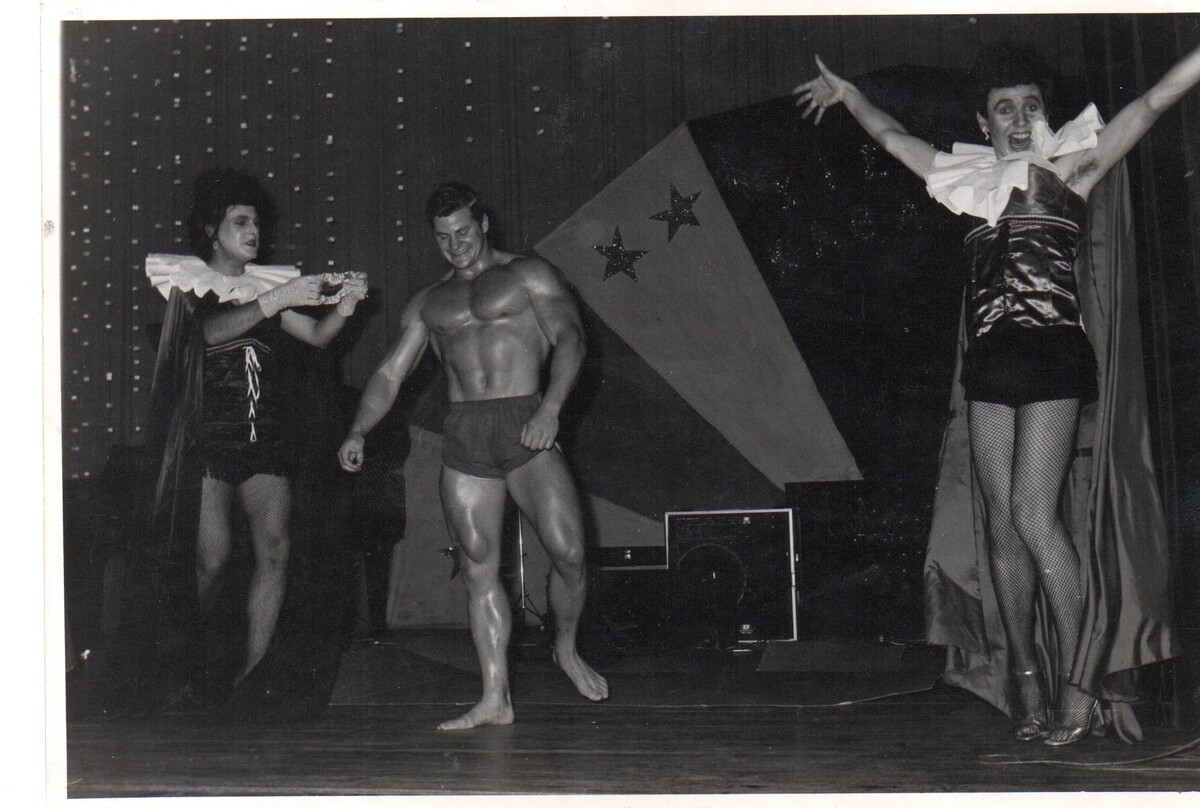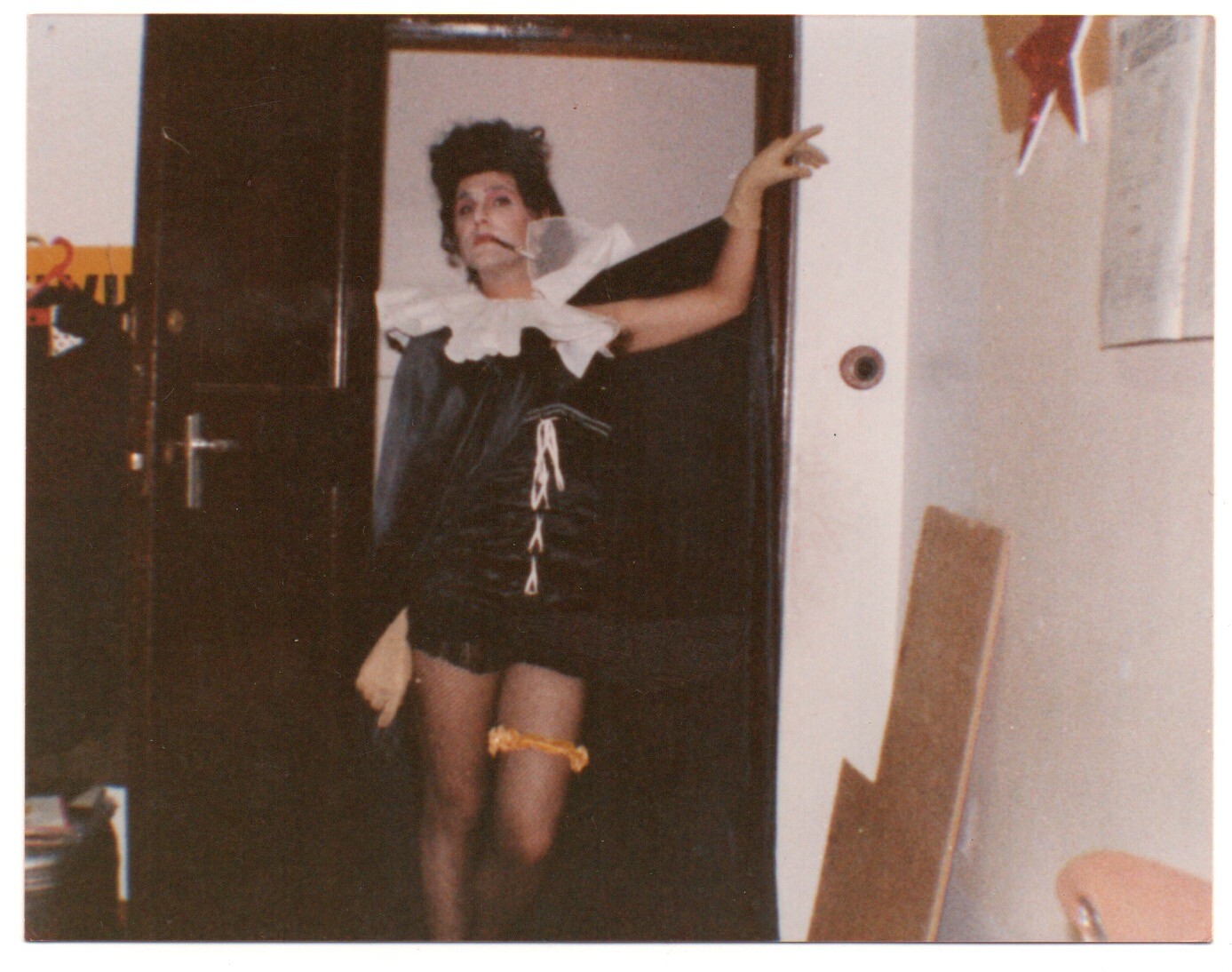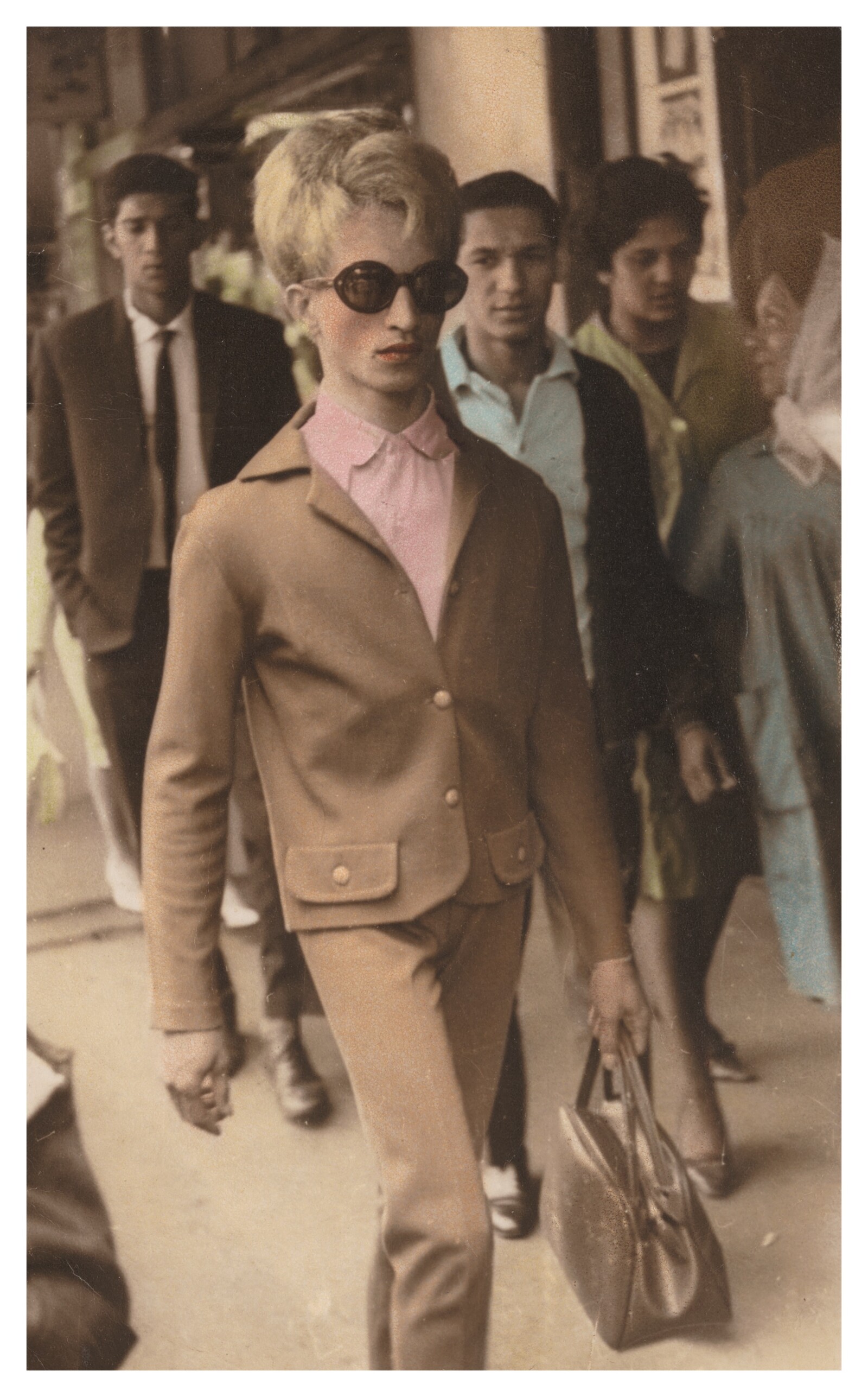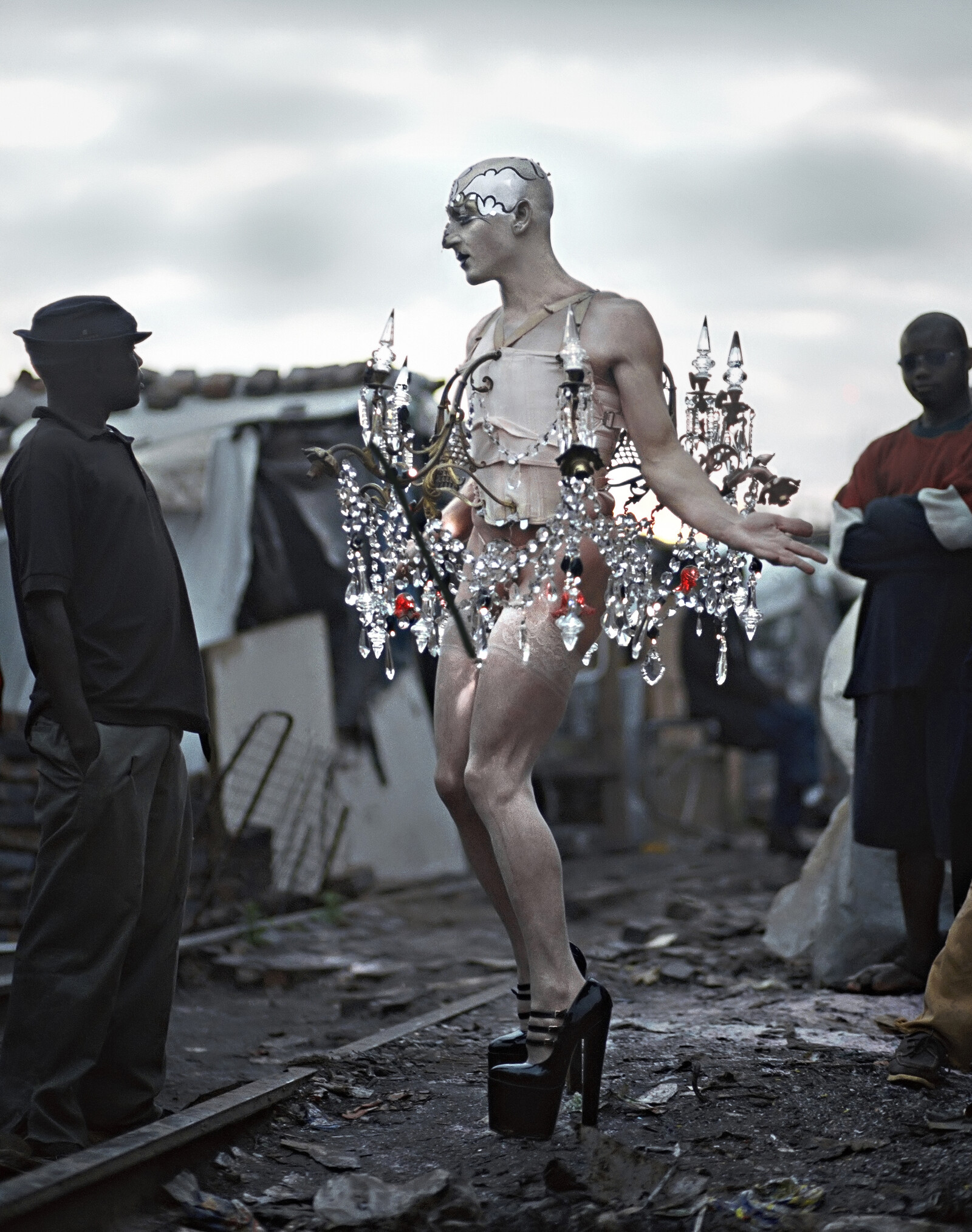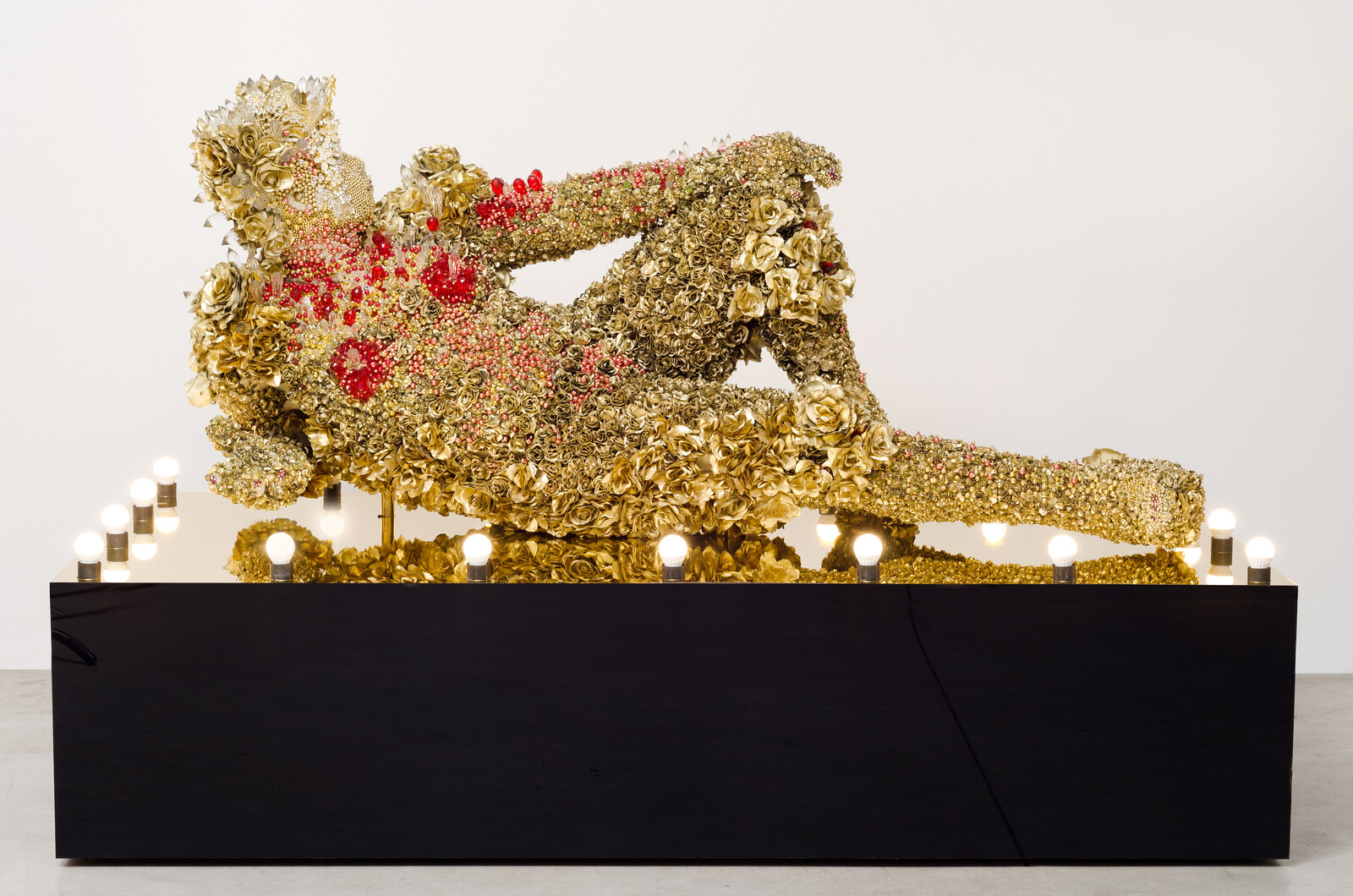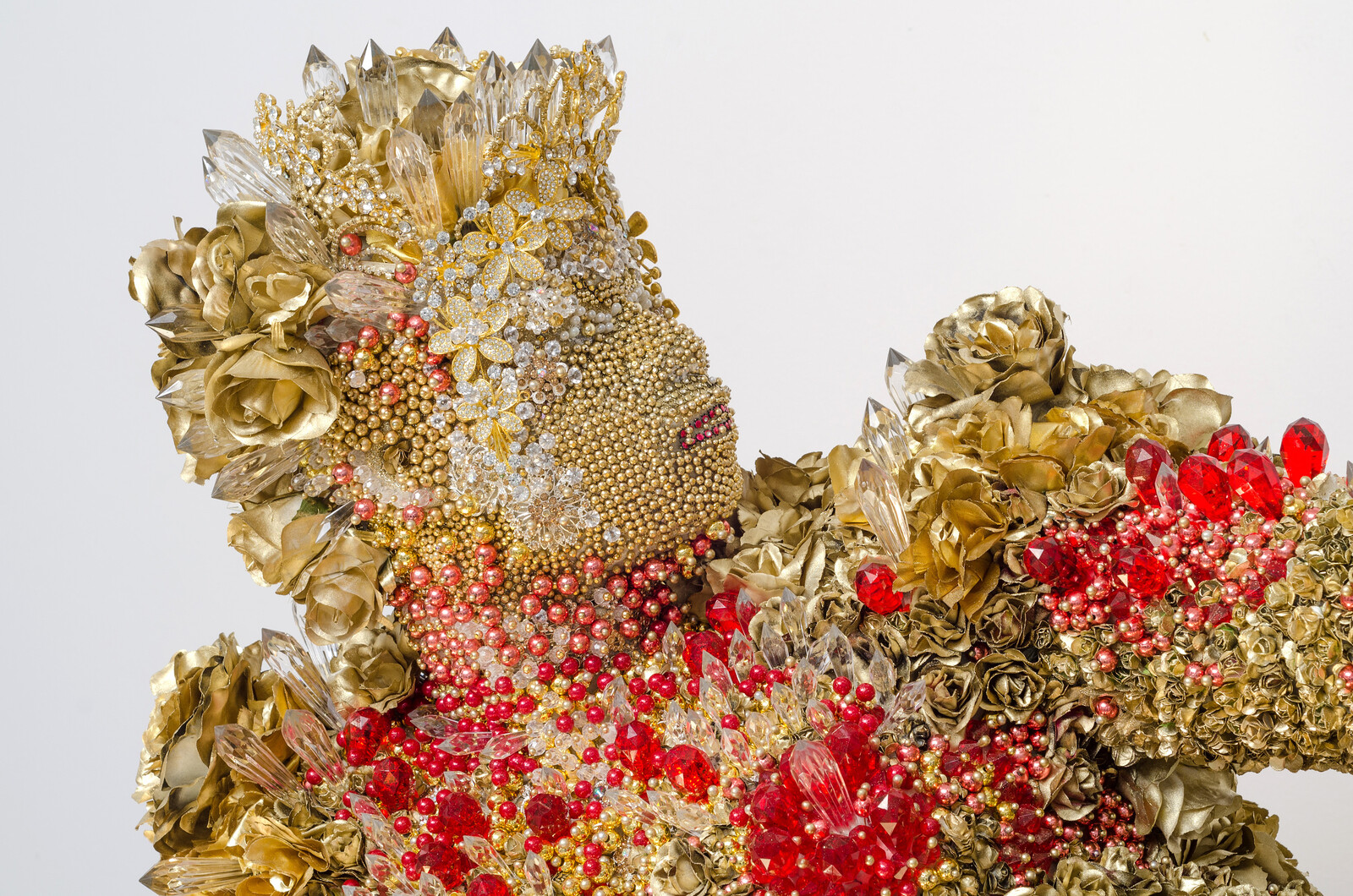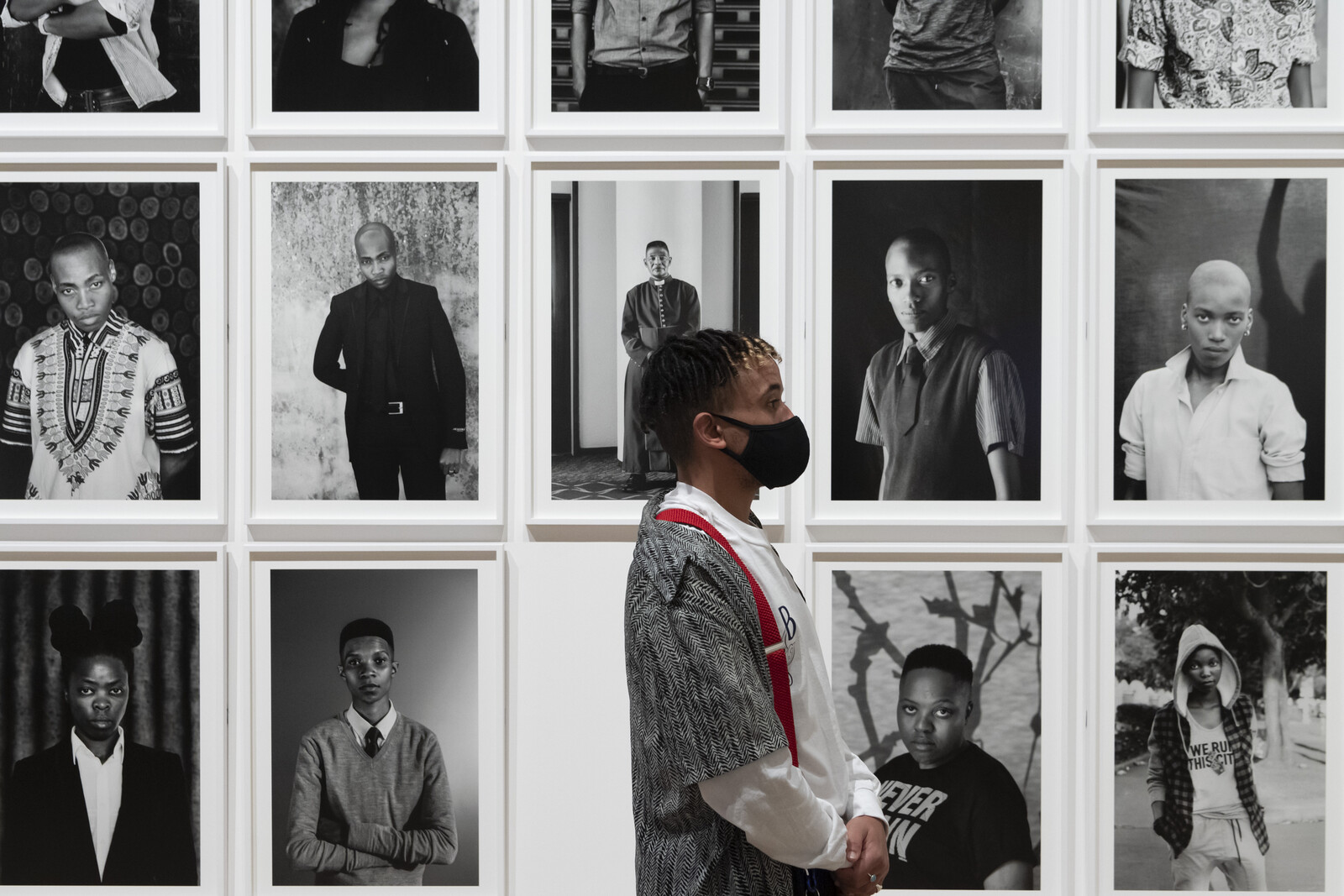During a recent project researching the history of nightclubs in Johannesburg, frustrated by the limitations of orthodox archives—newspapers, magazines, music books, biographies, Facebook groups—and the mythologizing of DJs and musicians, I turned to artists for additional insight. Where did they dance, I asked, and how, if at all, did these ephemeral spaces influence their practice? The two-part question reflected my focus: I was interested in mapping the safe spaces and contact zones where Johannesburg residents—Black and white, straight and queer, normative and other—retreated at night, sometimes in flagrant costumes, to socialize, dance, and possibly enact dissident desires against the backdrop of apartheid and its messy aftermath. The direct line artists drew from their club experiences to their professional practice was surprising.
Zanele Muholi, the binary-refusing artist whose photographs register the complications and assertions of South Africa’s Black LGBTQ+ communities, recalled partying at Club Chameleon in Johannesburg in the late 1990s. The club night was organized by Sistahs Kopanang, a short-lived Black lesbian group active between 1997 and ’99, and occupied a venue close to the home of Muholi’s future mentor, the photographer David Goldblatt. The club’s anthem was Michael Bolton’s schmaltzy 1995 paean “Can I Touch You… There?” Muholi was a scenester. In 1997 they placed second in a beauty contest called Ms. Sappho that was purposefully limited to Black lesbians as a point of political affirmation. Boundaries, though, were liquid. “We used to mix with gays,” Muholi told me, namechecking Tsidi’s Place in Soweto among those haunts.
Muholi’s practice—recently surveyed at London’s Tate Modern—refuses the participant-observer model of documentarians such as Magnum photographer Ian Berry. In 1958, British-born Berry produced a photo essay on the well-known Cape Town drag queen Madame Costello, aka Joey Felice, whose home provided a sanctuary for private drag parties. Published a year later in Drum magazine, a beacon of Black urbanity at a time when tribal identities were being reified by the apartheid state, Berry’s essay has enjoyed popular currency ever since; it forms part of an easily discoverable public archive. In 1996, his photos were included in “In/sight: African Photographers, 1940 to the Present” at the Guggenheim Museum in New York. In his catalogue essay Okwui Enwezor, who co-curated the show with Clare Bell, Danielle Tilkin, and Octavio Zaya, expresses admiration for the “intimate and revealing view of life in the capacious but subterranean world” of Cape Town’s mixed-race drag culture, which, as Berry’s photos make clear, intersected with a tolerant Muslim everyday.1
This tolerance is explicitly figured in the private photos of Kewpie, aka Eugene Fritz, a prominent drag artist and hairdresser whose biography connects to a long history of drag performances in Cape Town and openly manifested queer identities. Kewpie’s personal collection of nearly 700 photos, now part of the GALA Queer Archive in Johannesburg, was the subject of a 2018 exhibition at the District Six Museum and again earlier this year at fashion boutique AKJP Studio, at a fundraiser to benefit this endangered Cape Town community museum. Enwezor’s description of the scenes witnessed by Berry as perfumed with “camp, sadness, and joie de vivre” is even truer of Kewpie’s vivid archive. That word camp deserves pause.
In his book Camp: The Lie that Tells the Truth (1984), painter Philip Core admits that camp embraces multitudes—“camouflage, bravura, moral anarchy, the hysteria of despair, a celebration of frustration, skittishness, revenge”—but is essentially relational and offers a lingua franca to its user. “The duplicity of camp lies in the use of self as language; an instrument at once revealing and defensive.”2 This redeployment of the self as instrument is deeply coded into the work of many South African artists, including Muholi, Steven Cohen, and Athi-Patra Ruga.
Shortly after moving to Johannesburg in the early 2000s to study fashion, Ruga, who is best known for his campy agitprop performances and textile works that reimagine Black history, became a regular at Heartlands complex in Braamfontein. This constellation of gay bars and clubs popped up on the northern fringe of the city center in the years after the Constitutional Court in 1998 overturned the common-law crime of sodomy. It was at Heartlands that Ruga first encountered the work of trashy drag performer Sharon Bone, aka David Nel aka Pettrus “Peter” Kotze, a white provocateur in the mold of Leigh Bowery and Divine, and muse to Bulgarian-born, Johannesburg-based actor and underground filmmaker Stanimir Stoykov. For Ruga, the gender-fluid manners of the newly liberated city and its demimonde inspired him to publicly cross-dress for the first time. “Drag was a great expression of fearlessness,” he told me.
Stoykov has also dragged, notably in burlesque theater comedies, but his renown owes more to his films, which include Thrush (2002), featuring Bone, and Faster Santa Claus Kill! Kill! (2018). Working in the schlock tradition of Russ Meyer and John Waters, Stoykov’s casts include both amateur and professional actors, some drawn from popular soap operas, and whenever he films on location he ignores permitting requirements. Stoykov has described Johannesburg as “a rebel town.”3
This dissident energy was central in forming Johannesburg-born, Lille-based Cohen’s early identity as an artist. “Emerging into the radical—not quite non, but less racist—gay fuck clubs of the 1980s, and the wild cruising world of shops, clubs, toilets, parks, and bushes, was an education in exploring the limits of civil liberties and the delicate aptitude of downright law breaking which has become so useful in my work,” said Cohen when I asked him how gay clubs like Anaconda, Mandy’s, Blood, and Zipps nurtured his creativity.
Around the time Bone was hosting and performing at Heartlands, Cohen staged his most infamous performance, Chandelier (2001). Initially known for his outrageous textile designs combining medical and military imagery with pornography, cartoons, and western art historical references, Cohen gained a reputation in the 1990s for his impromptu drag performances at dog shows, horse races, and rugby matches. The white middle class, though, is an easy target for outrage. For Chandelier, Cohen donned face paint, S&M heels, and an antique French chandelier repurposed into a wearable tutu, and wobbled through a shack settlement that was in the process of being demolished by city officials. He was derided and threatened, also kissed as if a religious icon, and in one instance erotically set upon by a resident drunk brandishing a Hustler centerfold.
Ruga saw Chandelier when it was first screened as a film at a Johannesburg arts festival a few months later. Cohen’s influence on Ruga is apparent in early performances like Injibaba (2009), for which Ruga dressed in heels and a costume made of Afro wigs and tottered through a Swiss meadow to a sheep pen; made during an artists’ residency in Bern, the work offers an embodied critique of a xenophobic poster issued by a Swiss right-wing party.
When the Zeitz MOCAA opened in Cape Town in 2017, its sprawling launch exhibition emphasized recent approaches to figuration. Among the works on display was Ruga’s sculpture, Proposed Model for Tseko Simon Nkoli Memorial (2017). The reclining figure, made from foam and embellished with fabric roses and baubles, is exemplary of an opulent, almost baroque, strand of figuration in South African art that nonetheless has antecedents in the work of painters like Christo Coetzee and Penny Siopis. Ruga’s work honors Simon Nkoli, a jailed anti-apartheid activist who came out while he was imprisoned and became a prominent gay rights champion during the 1990s interregnum.
Nkoli, who died in 1998 from Aids, was a co-organizer, alongside Beverley Ditsie, of South Africa’s first Pride march in 1990. Cohen was an active participant in the early marches, describing his involvement as “a kind of social revenge.” At a 1997 Pride he brandished a John Heartfield-like placard of his own design; it lambasted the post-apartheid minister of justice’s opposition to repealing anti-sodomy laws. Nkoli’s name connects to another artist only recently receiving his due: Matthew Krouse. In the early 1980s, during his theatre studies at the University of the Witwatersrand in Braamfontein, Krouse lived next door to Nkoli. In the following decade, while serving as Nadine Gordimer’s amanuensis, Krouse edited The Invisible Ghetto, an anthology of lesbian and gay fiction originally planned by Nkoli, which was published in 1993. Between these two biographical milestones, Krouse produced some of the most provocative theatre and film of the late apartheid years.
In a timely act of recovery, Johannesburg-born, Berlin-based artist Adam Broomberg recently devoted his solo exhibition at Kunsthallo, an online gallery established by London-based artist Jeremy Hutchison, to Krouse. Broomberg first met Krouse in The Dungeon, a gay nightclub he frequented as a teenager. The online exhibition—which is documented as if installed in a large central London gallery—showcased three 1980s films in which Krouse had been involved. The earliest, De Voortrekkers (1985), was conceived by Krouse with producer Jeremy Nathan and cinematographer Giulio Biccari, and features simulated gay sex and the collapse of a white nationalist monument in Pretoria. The Andrew Worsdale-directed feature Shot Down (1987) was co-written by Krouse and tells the story of a second-rate white filmmaker’s lackluster attempts to infiltrate a militant theatre group headed by a Black activist. Apartheid censors banned both films. Additionally, the exhibition included a rough edit of The Soldier (1989), an unrealized film largely set in a Beckettian version of a military barracks that culminates in a male rape.
Krouse’s films, like his cabaret act with Robert Colman at the Black Sun (snippets of which feature in Shot Down), drew on the political theatre of Bertolt Brecht and Augusto Boal, Warholian camp, and—importantly—the embodied flagrance of local drag queens such as Granny Lee, aka Leonard du Plooy. Similar to Cohen, Krouse’s performance work exploring themes of white masculinity, militarism, and libidinal energy was also strongly informed by his time in the military. During his two years of mandatory conscription Krouse formed a drag troupe known as the Arista Sisters. Initially a camp gag, the troupe ended up doing a military-approved national tour showcasing their wigs-and-high-heels Fats Waller routine featuring a real muscleman.
“Female impersonation has been one of the basic forms of entertainment in barracks, prisons, and sometimes even in schools,” wrote Krouse in a 1994 essay. “Armies and institutions allow—and sometimes even encourage—a brief and public display of momentary transgression. It is a sanctioned assertion that there is otherness, an assertion of who the other is.”4 This sense of otherness persists, despite the perceived social and legal accomplishments of the 1990s.
Muholi, whose agitprop tactics and early street performance rehearse a long-established tradition of drag-influenced activism, is concise about the ongoing challenges. South Africa is a multicultural society marked by a plurality of life experiences, but up until recently queer history and curating has tended to emphasize the “drag scene,” which as Muholi cautioned in a 2017 interview asserts “male dominance within the queer scene or queer village.” Muholi, along with photographer Jody Brand and trans artist Dean Hutton, aka Goldendean, has variously challenged this hegemony with work that, while recuperative, provocatively uses the costumed self as revealing instrument.
Clare Bell, Okwui Enwezor, Olu Oguibe, and Octavio Zaya (eds.), In/Sight: African Photographers 1940 To The Present (New York: Guggenheim, 1996), 188.
Philip Core, Camp: The Lie that Tells the Truth (New York: Delilah Books, 1984), 9.
Josef Talotta, “Johannesburg: Shape-shifting City,” Condé Nast Traveller, February 2015: https://www.cntraveller.com/gallery/insider-guide-johannesburg.
Matthew Krouse, “The Arista Sisters, September 1984,” in Defiant Desire: Gay and Lesbian Lives in South Africa (Johannesburg: Ravan Press, 1994), 213.
